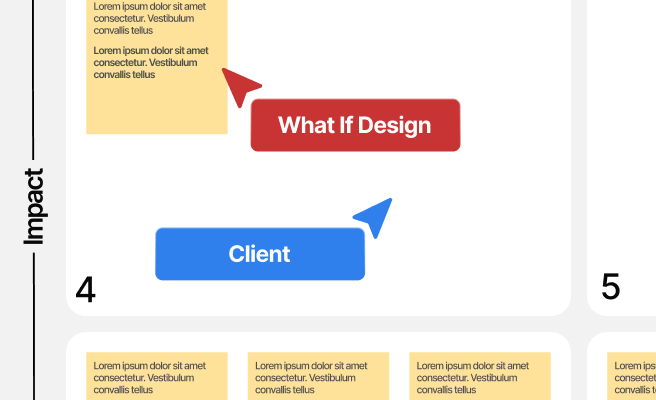Cross-Sectional Study
<p>A cross-sectional study is a type of observational research commonly used in various fields like epidemiology, social sciences, and market research. It involves analyzing data from a population at a specific point in time to identify patterns, correlations, and prevalence of certain characteristics or conditions. This method is crucial for understanding the current state of a population without manipulating the study environment.</p>
<p>Historically, cross-sectional studies have been instrumental in identifying public health trends and informing policy decisions. For instance, they have been used to track the prevalence of diseases, such as diabetes or heart disease, in different demographics. This approach provides a snapshot of the health status and risk factors in a community, which can guide targeted interventions.</p>
<h2>Components and Methodology of Cross-Sectional Studies</h2>
<p>Cross-sectional studies typically include the following components:</p>
<ul>
<li><strong>Sampling:</strong> Selecting a representative sample from the population to ensure the findings are generalizable.</li>
<li><strong>Data Collection:</strong> Gathering data through surveys, interviews, or medical records at a single point in time.</li>
<li><strong>Analysis:</strong> Using statistical methods to analyze the collected data and identify patterns or associations.</li>
</ul>
<p>The methodology of a cross-sectional study often involves defining the study population, determining the sample size, designing the data collection tools, and conducting statistical analysis. For example, a study investigating the prevalence of smoking among adults in the United States might use a random sampling method to select participants and employ questionnaires to gather smoking-related data.</p>
<h3>Benefits of Cross-Sectional Studies</h3>
<p>Cross-sectional studies offer several advantages:</p>
<ul>
<li><strong>Cost-Effective:</strong> These studies are generally less expensive and quicker to conduct compared to longitudinal studies.</li>
<li><strong>Snapshot of Current Conditions:</strong> They provide a clear picture of the current state of a population, making it easier to identify existing issues and opportunities for intervention.</li>
<li><strong>Easy to Implement:</strong> The design is straightforward, with no need for long-term follow-up, making it easier to manage and execute.</li>
</ul>
<h3>Challenges and Limitations</h3>
<p>Despite their benefits, cross-sectional studies have certain limitations:</p>
<ul>
<li><strong>Temporal Ambiguity:</strong> It is challenging to establish causality because data is collected at a single point in time. For instance, while a study might show a correlation between sedentary lifestyle and obesity, it cannot determine whether the sedentary lifestyle caused obesity or vice versa.</li>
<li><strong>Selection Bias:</strong> If the sample is not representative of the population, the findings may not be generalizable. This can occur due to non-random sampling methods or low response rates.</li>
</ul>
<h3>Real-World Examples and Applications</h3>
<p>Cross-sectional studies have been widely used in various industries including climate tech. For instance, a <a href="https://www.ncbi.nlm.nih.gov/pmc/articles/PMC4700858/" style="color: #2896FF; text-decoration: underline;">study</a> conducted on the adoption of renewable energy technologies in different regions assessed the current usage patterns and barriers to adoption. This information is crucial for developing strategies to promote renewable energy.</p>
<p>Another example is a survey conducted by the EPA to determine the level of awareness and usage of energy-efficient appliances among households. The findings helped in designing targeted educational campaigns to increase the adoption of these appliances.</p>
<h2>Implementing Cross-Sectional Studies</h2>
<p>When implementing a cross-sectional study, it is essential to:</p>
<ul>
<li><strong>Define Clear Objectives:</strong> Establish what you aim to discover through the study.</li>
<li><strong>Select a Representative Sample:</strong> Ensure that the sample accurately reflects the population to enhance the validity of the findings.</li>
<li><strong>Use Reliable Data Collection Methods:</strong> Employ validated tools and techniques to gather accurate data.</li>
<li><strong>Conduct Thorough Analysis:</strong> Use appropriate statistical methods to analyze the data and draw meaningful conclusions.</li>
</ul>
<h3>Tools and Resources</h3>
<p>Several tools can assist in conducting cross-sectional studies. For data analysis, software like <a href="https://www.ibm.com/analytics/spss-statistics-software" style="color: #2896FF; text-decoration: underline;">IBM SPSS</a> or <a href="https://www.r-project.org/" style="color: #2896FF; text-decoration: underline;">R</a> can be used for statistical analysis. For data collection, survey platforms like <a href="https://www.qualtrics.com/" style="color: #2896FF; text-decoration: underline;">Qualtrics</a> or <a href="https://www.surveymonkey.com/" style="color: #2896FF; text-decoration: underline;">SurveyMonkey</a> are popular choices.</p>
<h2>Conclusion</h2>
<p>Cross-sectional studies play a pivotal role in providing insights into the current state of various populations and identifying areas that require intervention. While they have limitations in establishing causality, their ability to offer a snapshot of prevailing conditions makes them invaluable in fields like public health, social sciences, and climate tech. By carefully designing and implementing these studies, researchers can gather crucial data to inform policies, strategies, and innovations.</p> <p>We’re using the power of design to increase the adoption of climate technologies and innovation. View our work in climate to know more on how we can support your vision. <a href="https://www.whatifdesign.co/climate" style="color:#2896FF; text-decoration:underline;">View our climate projects</a>.</p> <p>Increase user engagement that converts your demos into sales. Optimise your UX strategies with our audits.
<p>Fill out the <a href="https://tally.so/r/n97pxQ" style="color:#2896FF; text-decoration:underline;">UX Audit form</a> to get started. Ready to discuss your needs? <a href="https://cal.com/akhilak/what-if-design?duration=25" style="color:#2896FF; text-decoration:underline;">Book a consultation call</a> with us today.</p></p>

Let's scale your impact with great design.
Free consultation, no sales pitch
Thank you! Your submission has been received!
Oops! Something went wrong while submitting the form.
Let’s talk
Nothing great is built alone.
Let’s connect about your vision, our work and how we can collaborate.
Get in touch

